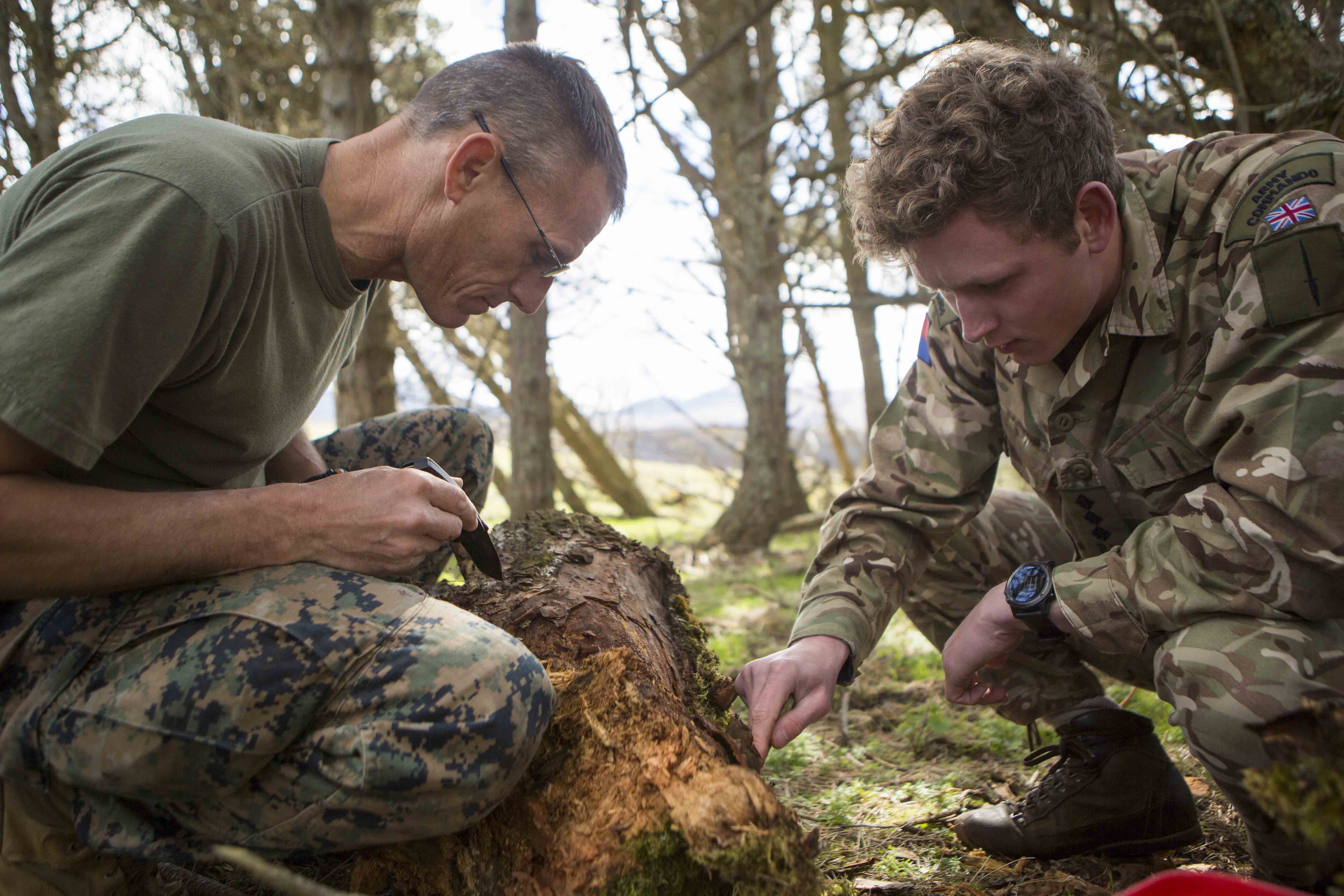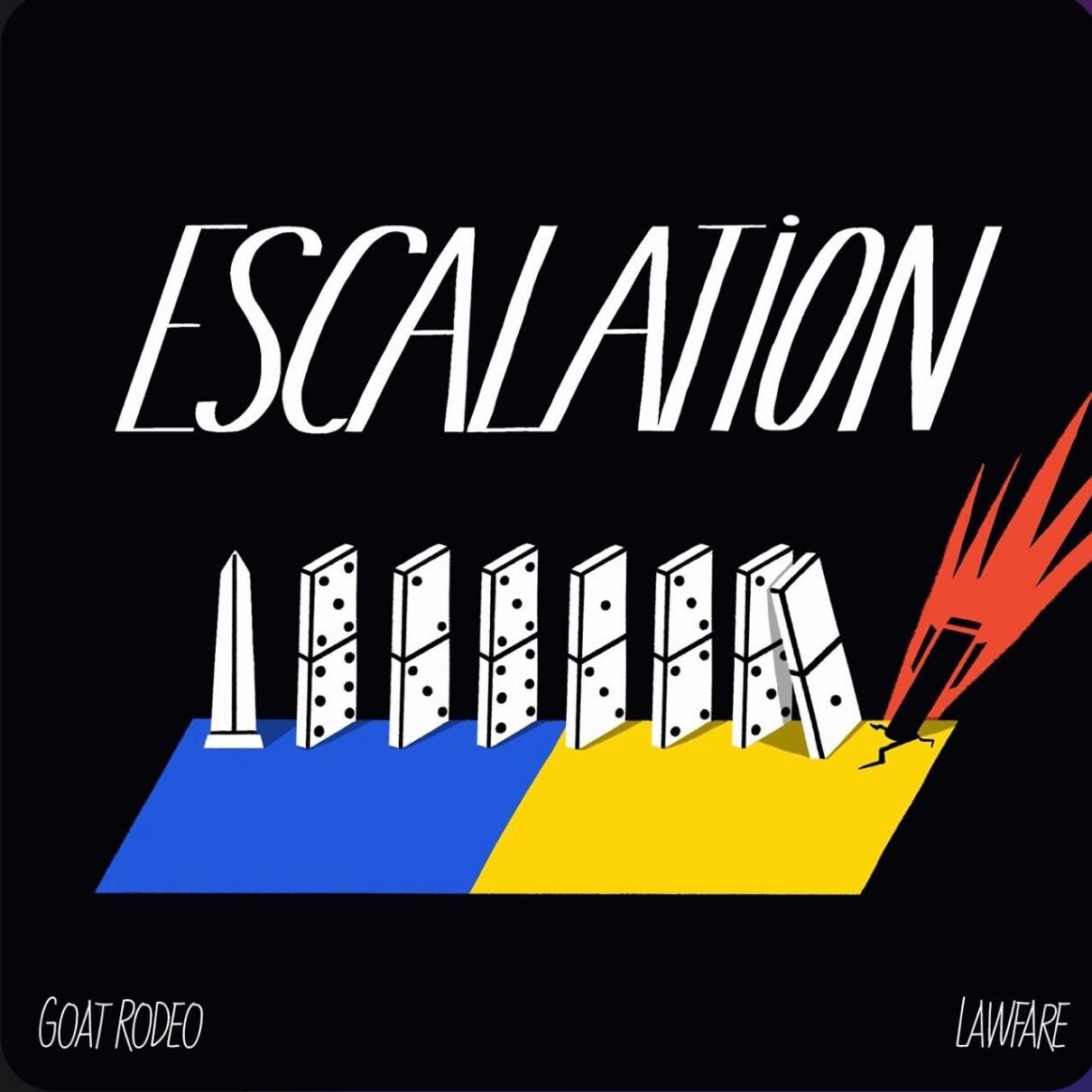Military Foraging: Historical Practice and Contemporary Advice
Gen. Ulysses S. Grant’s prudent navigation of nascent legal concepts to diminish his force’s reliance on supply lines and forage for provisions enabled battlefield success. Today, Grant’s actions provide a cogent legal blueprint for contemporary military leaders in future operational planning.

Published by The Lawfare Institute
in Cooperation With

In January, U.S. Marines reported slaughtering pigs and foraging for other organic supplies as part of training operations. This somewhat idiosyncratic anecdote should be read in conjunction with other recent statements and publications issued by Marine Corps leadership. For example, in 2019 the Corps said it would look to:
plan, develop, and integrate non-traditional sources of supply to include: host nation support, 21st-century foraging … and supplying forward. Marine forces will embrace the concept[s] of austerity … limited acquisition … [and] coordinated and integrated supply action using organic operational contracting support[.]
In the Corps’ Force Design 2030—its force restructuring plan to bolster combat power published in March 2020—the commandant of the Marine Corps, Gen. David H. Berger, emphasized the criticality of force endurance and sustainability in hostile territories. This vision and subsequent reemergence of the historic wartime practice of foraging becomes particularly salient amid rising tensions with China.
For the fourth time in the past year and a half, President Joe Biden was unequivocal in his intent to protect the embattled island of Taiwan: “Yes,” the president responded bluntly when asked on “60 Minutes” in September whether “U.S. forces, U.S. men and women would defend Taiwan in the event of a Chinese invasion?” While speaking in Tokyo in May, Biden similarly responded in the affirmative when asked about defending Taiwan against Chinese invasion and then expounded: “We agree with the One China policy. We signed on to it, and all the attendant agreements were made from there. But the idea that it can be taken by force—just taken by force—is just not appropriate.” In October 2021, during a televised town hall meeting, Biden was again unequivocal. When Anderson Cooper asked if he would “vow to protect Taiwan,” Biden once again responded, “Yes.” (His August 2021 interview with George Stephanopoulos is not as clear, though the upshot was universally understood as espousing the same message.) Moreover, as CNN's Stephen Collinson reports, the “[p]resident’s comments are in line with a strong push on parts of Capitol Hill to harden U.S. policy on Taiwan.”
Other emerging realities also enhance the centrality of sustainability in conflict—especially in remote locations away from friendly bases of operations. The strains on supply chains stemming from the coronavirus pandemic are well documented, as are the economic disruptions caused by difficulties in the Suez Canal in March 2021. And despite the proximity of the front lines to its homeland, Russia’s supply issues in the war in Ukraine are similarly well documented. Despite the modernization of military forces and broad technological advancements, supplying a war effort remains a significant challenge for military leadership. Accordingly, the Corps’ reinvigoration of foraging efforts is both timely and essential.
In modern warfighting posture, when forces deploy forward into austere environments and away from supply depots, maintaining lines of communication becomes increasingly adverse yet equally vital. Accordingly, forces may need to forage, or search for and garner provisions from private or public land, for sustenance in foreign locales to maintain operational capability and presence. Military foraging is not ahistorical—history is in fact replete with instances in which fighting forces foraged public and privately owned land in hostile or neutral territory. But the practice does implicate fundamental concepts of humanitarian law, which military officers—especially judge advocates—will need to fully comprehend to avoid significant legal pitfalls that yield detrimental strategic effects. This article explores both that history and relevant legal concepts using Gen. Ulysses S. Grant’s Vicksburg campaign during the American Civil War as an early exemplar of effective and legally sound foraging operations during the nascent stages of codified humanitarian law.
The Chaotic Years
At the start of the Civil War, Union leadership was generally uneasy about disturbing noncombatants amid conflict. In adjudging strategy vis-a-vis noncombatants, President Abraham Lincoln relied primarily on the advice of Gen. George McClellan in the early stages of the war. McClellan, according to John Fabian Witt, was “one of the few Americans versed in the highly idealized rules of war handed down by the professional armies of 18th century Europe.” In McLellan’s view, an “aggressive campaign” would undermine the customs that made war resemble what he believed should be “a kind of gentleman’s duel.” Heeding McClellan’s wisdom, Lincoln initially aimed to “limit the impact of the war … [as] it would be easier to reunite a divided nation” after the war’s eventual conclusion.
Contrarily, the degree to which the military could engage with noncombatants was not centrally codified or regulated across the armed forces. Rather, “the conduct of soldiers during hostilities was mostly based on customs,” spanning back to “medieval” practices. Filling this vacuum, sundry instructions and ad hoc orders from individual general officers prescribed appropriate behavior toward an enemy as commanders possessed significant autonomy to interpret customs of war and issue orders compelling desired conduct.
It wasn’t until Gen. Henry Halleck, then chief of staff of the Army, published a collection of rules of armed conflict in 1861 that a coherent “legal” paradigm began to emerge. In his rules, Halleck deviated from the “ancient rules” of wartime foraging, which generally dictated that a combatant force could freely confiscate private property as spoils of war. Halleck instead espoused a general prohibition of requisitioning private property, stating that “private rights, and private property ... are, in general, unaffected by the operations of a war.” But Halleck also provided exceptions to this general prohibition, allowing for the seizure of both public and private property out of military necessity (with assurances of compensation for private property), as a penalty for military offenses, or when taken from the battlefield. Moreover, Halleck prescribed additional permissions by distinguishing the needs of “main armies” and “small detachments,” believing the former to be sufficiently well stocked as to militate against military necessity, whereas the latter may need to “procure subsistence wherever they can.”
So, too, did Halleck warn of the potential excesses of foraging, as soldiers could “violate individual rights” and turn “the ordinary peaceful and non-combatant inhabitants [into] bitter and implacable enemies.” This practice—otherwise known as pillaging—is presently defined as the taking of private or public movable property for private or personal use (or, in other words, outside the bounds of military necessity).
While instructive, Halleck’s “International Law, or, Rules Regulating the Intercourse of States in Peace and War” was merely a collection of his interpretations of the customs of war. In other words, it was not recognized as governing law. Notwithstanding the dissemination of Halleck’s treatise, military leadership remained untethered to a uniform doctrine of laws at the Civil War’s start.
Bringing Order to Chaos
As McLellan pursued his vision of a “gentleman’s war,” the Union suffered significant setbacks at Antietam and Fredericksburg, emblematic of a generally lackluster performance by Union forces writ large at the outset of the war. Resultantly, Lincoln recognized the need to affect a more offensive—yet “legal”—strategy to subdue the Confederacy. Lincoln thus commissioned a board of military officers and attorneys, led by Francis Lieber, “to propose ... changes in the Rules and Articles of War, and [promulgate] a Code of Regulations for the government of armies in the field[.]” After intense deliberation, the panel produced the “Instruction for the Government of Armies of the United States in the Field,” known otherwise as the “Lieber Code.” Notably, the code “enable[d] the new, more aggressive war that Lincoln wanted to wage in the spring campaign of 1863 while preventing aggressive modern warfare from sliding into total destruction.” Officials “reduced [the code] into a simple pamphlet for wide distribution to [all] soldiers of the Union army,” circulating it as General Orders No. 100 on April 24, 1863.
The code consisted of 157 articles and “covered almost all legal issues an army officer was likely to encounter in the field.” Notably, the code clarified foraging operations for commanders, albeit by reverse-engineering the situations in which it would be permissible. In broad strokes, the code explicitly legitimated the seizure of all public and military property—to include real property—belonging to a hostile government by the “victorious” force. Private property, by contrast, could be seized only under the auspice of “military necessity for the support or other benefit of the army or of the United States” unless forfeited by “crimes or … offenses of the owner.” Moreover, the code required commanding officers to provide receipts to owners of seized private property for postconflict indemnification so long as they did not abandon their property. The code further defined appropriate actions based on military necessity as “those measures which are indispensable for securing the ends of the war, and which are lawful according to the modern law and usages of war.” This necessity, according to the code, “allows … [for] the appropriation of whatever an enemy’s country affords necessary for the subsistence and safety of the army[.]”
Grant’s Vicksburg Application
Almost concurrent with the issuance of the Lieber Code, Gen. Grant—who gleaned important lessons on the use of “hostile” land to sustain one’s troops from Gen. Winfield Scott during the Mexican-American War—commenced an attack on Vicksburg, Mississippi, without established supply lines and instead directed his force to live primarily from the land. Grant’s novel plan for the Vicksburg campaign—the series of battles and maneuvers he launched against the fortress city—flew in the face of then-conventional military tactics. Indeed, “it had been regarded as an axiom in war that large bodies of troops must operate from a base of supplies which they always covered and guarded in all forward movements.” Instead, Grant was “determined to move independently … cut loose from [his] base, destroy the rebel force in Vicksburg and invest or capture the city.” With Confederate Lt. Gen. John Pemberton’s eventual surrender to Grant after that latter’s brutal 47-day siege, the Vicksburg campaign proved crucial to the Union’s eventual victory. But for our purposes, Grant’s audacious operation signaled the end of McClellan’s “gentleman’s war” and the beginning of the “harder” war that Lincoln ushered into existence.
Grant’s attack ultimately yielded a strategic surprise as Confederates failed to appropriately anticipate his force’s maneuvers away from their supply centers. Though wholly effective militarily, Grant’s operation was firmly within the bounds of applicable legal principles. The campaign, which complied with the tenets of the then-contemporary laws of armed conflict (the Lieber Code), thus serves as an exemplar for commanders to follow in contemporary efforts. Indeed, the administration promulgated the code via General Orders No. 100 five days before Grant cut from his supply line at Port Gibson on April 29, 1863, meaning it governed Grant’s every move once his operation commenced.
So how did he do it? As Grant crossed the Mississippi River, he tasked his “chief quartermaster” to oversee forage procurement of private property and issue “receipts ... when there was anyone to take them.” Because Grant was aware of both Halleck’s and Lieber’s warnings that soldiers would inevitably fall victim to a “plundering propensity,” he issued specific instructions to direct the proper conduct of foraging among the ranks, including directing his “Assistant Adjutant General, John A. Rawlins, [to issue] Order 133 which forbade ‘pilfering, and any unauthorized and unnecessary seizure or destruction of private property’” under penalty of death. Moreover, Grant solidified control over foraging campaigns by ordering trusted agents in each regiment to form “special detail[s] responsible for procuring ‘rations and forage.’” To guard against civilian contempt, Grant also directed the military to afford each civilian family “a sufficient supply of provisions for sixty days,” though qualifying that his orders were not “to be construed to deprive the soldier of his rations ... if the suffering must fall on one or the other, the citizen must bear it.”
In sum, Grant’s firm understanding of emerging legal norms and keen oversight of his force’s requisition efforts during the Vicksburg campaign provided decisive flexibility and allowed for seamless operations deep in hostile territory. Grant’s efforts established a precedent for effective, yet legal foraging operations, underscoring that military appropriation of property need not aggravate local law or oppress private citizens to bear fruit on the battlefield.
Modern Wartime Foraging Law
The Lieber Code undergirds fundamental concepts in contemporary customs and laws of war widely accepted by the international community, including the Geneva Conventions and their attendant 1977 Protocols, the Hague Regulations on Land Warfare, and the International Committee of the Red Cross’s compendium of the rules of customary international law. Additionally, the 2002 Rome Statute, which created the International Criminal Court (ICC), stems from the Lieber Code and defines certain war crimes that, if violated, could result in prosecution. (It must be noted, however, that the United States, while involved in the statute’s creation and at one point a signatory thereto, has not ratified it.) Because these core legal paradigms broadly establish the recognized law in which nations are bound in the conduct of armed conflicts, scrutiny thereof—including the applicability of foraging—is vital.
Before delving into these standards, we must review an important distinction. Under customary international law, as codified by the International Committee of the Red Cross (ICRC), there is a distinction between international and non-international armed conflicts (IACs and NIACs, respectively): The former involves two state actors, while the latter “is a situation of violence involving protracted armed confrontations between government forces and one or more organized armed groups, or between such groups themselves, arising on the territory of a State” (for example, the American Civil War).
One of the first IAC-codified legal regimes is the 1907 Hague Regulations, which largely follow the code’s example. Regarding confiscating private property, the regulations state:
[r]equisitions in kind and services shall not be demanded from municipalities or inhabitants except for the needs of the army of occupation. … Such requisitions and services shall only be demanded on the authority of the commander in the locality occupied. Contributions in kind shall as far as possible be paid for in cash; if not, a receipt shall be given and the payment of the amount due shall be made as soon as possible.
Rule 51(c) of the ICRC’s codification of customary international law also offered that “private property must be respected and may not be confiscated … except where … seizure of such property is required by imperative military necessity.”
Before diving into legal standards for foraging in a NIAC, it’s worth highlighting that, like the Lincoln administration’s stance during the Civil War, it remains the case that both modern customary law as well as the Defense Department’s Law of War Manual hold that a recognized government’s domestic law applies during NIACs. As such, the recognized sovereign may deploy the full extent of its war powers as well as its prefered legal regime to prosecute non-state actors and deviate from actions that may be considered unlawful during times of peace. However, despite this inherent flexibility in the application of a recognized government’s law and policy, the regime—and actual practice in the field—may be scrutinized by the international community under customary international law, as discussed below.
Common Article III of the 1949 Geneva Conventions and a number of defined fundamental human and civil rights for civilian populations under the 1907 Hague Regulations apply to NIACs—without specifically addressing foraging. Similarly, both the Additional Protocol II and ICRC customs do not explicitly address the improper military appropriation of civilian property. Regardless of the codified law’s silence on requisitioning property in NIACs, pillaging is expressly prohibited by customary international law irrespective of conflict classification. Practice relating to Rule 50 broadly holds that “Article 50 of the 1949 Geneva Convention I, Article 51 of the 1949 Geneva Convention II, and Article 147 of the 1949 Geneva Convention IV, extensive destruction and appropriation of property, not justified by military necessity and carried out unlawfully and wantonly are grave breaches of international law.” The ICC also explicitly outlaws pillaging, which they define as an appropriation of private property that occurs during an IAC or a NIAC, without the owner’s consent, for private or personal use. Thus, commanders and judge advocates must understand the distinction between where legal foraging ends and pillaging begins, particularly as international law assigns criminal liability to superiors who fail to curb subordinates’ unlawful activity.
Indeed, prosecutions dating back to World War II demonstrate the condemnation that the international community reserves for pillaging-related offenses. Three so-called Subsequent Nuremberg Proceedings—which tried 183 “major war criminals, but of lower ranks than those tried in the first trial” as well “as the Einsatzgruppen, industrialists, jurists, doctors, and civil servants”—prosecuted corporate industrialists for their companies’ plunder of natural resources. For example, in the case of IG Farben, the largest German corporate entity at the time, the defendant industrialists were convicted of, inter alia, illegally seizing raw materials. Additionally, at least one historian has found “at least twenty-six pillage cases” emanating from World War II.
More recent prosecutions in other international tribunals have also focused on pillaging offenses, including against military actors. The Delalić case before the International Criminal Tribunal for the former Yugoslavia (ICTY) saw the prosecution of two individuals for the “plunder of money, watches and other valuable property belonging to persons detained at the Celebici camp,” while other cases in the ICTY concerned a wider spread, more “systematic” violation. Similarly, prosecutions before the ICC also included charges stemming from the “looting of villages, camp settlements and the pillage of cars.” Moreover, the statutes creating the Court for Sierra Leone and the International Criminal Tribunal for Rwanda codified the crime of pillaging, which plays an outsized role given that each of these conflicts is properly classified as a NIAC. Broadly speaking, these recent prosecutions and codifications provide sufficient evidence that the international community is on notice of such offenses and is willing to prosecute where possible, regardless of conflict classification.
Current Defense Department Guidelines and Advice for Contemporary Commanders
The Defense Department’s Law of War Manual synthesizes existing law and guides military activities in the field. The manual largely mirrors the Lieber Code and permits the requisition of private property out of “military necessity” with a cash payment or “a receipt to be given to allow for compensation to be paid at the conclusion of war,” defining “necessity” as the “principle that justifies the use of all measures needed to defeat the enemy as quickly and efficiently as possible that are not prohibited by the law of war.” Notably, it provides some leeway for a commander’s interpretation of what constitutes necessity. Finally, the manual enjoins forces from the confiscation of private property and pillaging while permitting the uncompensated appropriation of property of the enemy military and state (or, in other words, public property).
Grant’s use of general orders and trusted agents to effectuate his foraging strategy serves as an exemplar for contemporary commanders to follow. These best practices are particularly salient as the “law of war treaties ... specif[y] that commanders must take appropriate measures to ensure that the provisions of those treaties are observed.” Indeed, if the Defense Department wishes to pursue foraging and natural supply sources to guard against supply chain vulnerabilities—and it should—the department must also ensure that the incoming commanders, judge advocates, and logistics personnel receive robust training on the rules and standards of conduct pertaining to legal foraging efforts. Commanders should then administer their respective programs with clear, written implementation guidance to their subordinate forces in carrying out foraging efforts, including drafting such orders in coordination with a judge advocate, providing useful examples, and updating these orders regularly. Further, commanders and judge advocates should conduct in-depth training and establish a communications channel for members in the field to receive on-the-spot legal advice and for logisticians to issue receipts and payments in short order. Importantly, commanders must also prepare to investigate, adjudicate, and report all claims of wrongdoing emanating from subordinate forces immediately. And given the multifaceted legal complexities involved in foraging efforts, the military should choose individuals tasked with carrying out foraging expeditions based on experience, judgment, and trustworthiness, lest military personnel frustrate foraging limitations and risk a loss of legitimacy and the deterioration of local support for missions abroad.
Disclaimer: Although the authors are officers in the United States Navy, the opinions and assertions expressed in this article are those of the authors and do not necessarily reflect the official policy or position of the United States Government, the Department of Defense, or the Department of the Navy.






